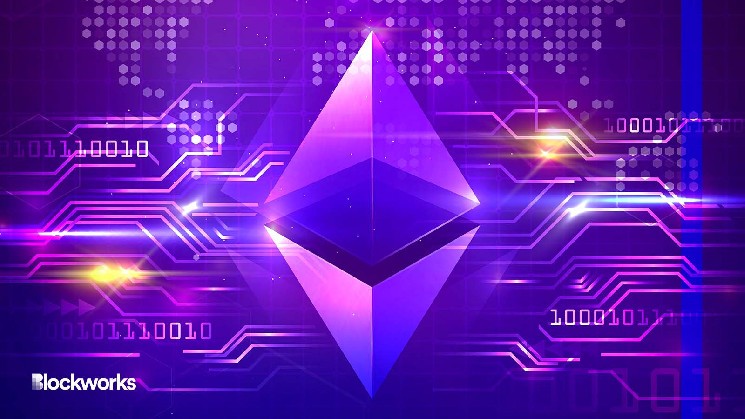High Gas Fees Worth the Pain? Ethereum’s Deflationary Model in Action

Using Ethereum is expensive.
Whether it’s from trading on DeFi, flipping NFTs, or gambling with memecoins, transaction fees have been driven upward for months on the network. The rise extends to simply sending tokens from one wallet to another.
While recent memecoin buffoonery has exacerbated the problem, ether (ETH) gas fees have been gradually climbing long before the more recent get-rich-quick PEPE craze, with previous perpetrators Uniswap and Blur elevating costs.
But it’s not all bad. New mechanisms introduced by EIP-1559 in 2021 brought in the burning of base fees, causing deflationary conditions for the network.
This fee model contributes to the narrative of Ethereum as “ultrasound money,” reducing the supply of ETH as on-chain activity drives demand. Adam Smith might have been on to something.
In theory, a reduction in supply should increase Ethereum’s value as an asset in the long term. Avi Felman, head of digital asset trading at GoldenTree Asset Management, and Jonah Van Bourg, Cumberland’s global head of trading, spoke to Blockworks on the 1000x podcast about their evolving investment thesis for Ethereum.
“Even though 16 gwei is neutral gas levels for Ethereum,” Van Bourg says, “we’re consistently averaging 50 to 150 gwei.” As a result, ETH is highly deflationary at the moment, he says.
“And even if it does eventually die down,” he says, “the ETH that’s being burned as a result of this activity is never coming back.”
Van Bourg asks Felman, “What does it mean for price, and what does it mean for supply and demand of block space? Is there an investment thesis there?”
EIP-1559 opened the monetary door
Felman says the “best thing” Ethereum ever did for itself was the implementation of EIP-1559, which made ETH as an asset more attractive for investment.
“It opened the door for so much institutional capital to come into this space,” he says.
“I gave a talk last week at a conference that was filled with a lot of pension fund allocators, a lot of institutional allocators. I got an obscene amount of questions on it,” Felman says.
“My job,” he says, was to “teach these guys about what crypto is, cuz these guys knew, when I say nothing, I mean literally nothing, about crypto.”
Felman suggests Ethereum fee burns behave like traditional finance stock buybacks. Just as a company can buy back their own equity to indirectly increase value for shareholders, a fee burn can indirectly drive price action for anyone holding ETH. “If ETH annualizes out to $5 billion a year in burn fees, that’s a pretty substantial ‘buyback,’ right?”
“And this is all during a bear market,” he adds.
“That really hit home for a lot of people.”
Ethereum stands apart from other layer-1 protocols because of this formula, Felman says.
Other layer-1s like Solana, he says, do not generate fees in the same way — and, importantly, do not burn fees to reduce supply. Alternative layer-1s as such do not “generate revenue for their shareholders in the same way that Ethereum does,” so “allocators are just way less likely to come in and buy it.”
“Because all eyes are on Ethereum, because that’s where the speculative money is, because that’s where the market participants are, they’re able to charge those fees,” he says.
Felman compares the current attractiveness of Ethereum to the appeal of living in New York. “Yes, Manhattan’s expensive, but it’s expensive for a reason — because everybody’s there, and everybody that you want to be around is already there.”
And the beauty of proof of stake is that all of those fees that are burned and all the fees that are generated, Felman says, “are now paid back to owners of the asset.”






 Bitcoin
Bitcoin  Ethereum
Ethereum  Tether
Tether  USDC
USDC  TRON
TRON  Dogecoin
Dogecoin  Cardano
Cardano  Bitcoin Cash
Bitcoin Cash  Chainlink
Chainlink  Monero
Monero  Stellar
Stellar  LEO Token
LEO Token  Zcash
Zcash  Litecoin
Litecoin  Hedera
Hedera  Dai
Dai  Cronos
Cronos  OKB
OKB  Tether Gold
Tether Gold  Ethereum Classic
Ethereum Classic  KuCoin
KuCoin  Gate
Gate  Algorand
Algorand  Cosmos Hub
Cosmos Hub  VeChain
VeChain  Dash
Dash  TrueUSD
TrueUSD  Tezos
Tezos  Stacks
Stacks  IOTA
IOTA  Basic Attention
Basic Attention  Theta Network
Theta Network  Decred
Decred  NEO
NEO  Synthetix
Synthetix  Qtum
Qtum  Ravencoin
Ravencoin  0x Protocol
0x Protocol  DigiByte
DigiByte  Zilliqa
Zilliqa  Nano
Nano  Siacoin
Siacoin  Numeraire
Numeraire  Waves
Waves  BUSD
BUSD  Status
Status  Ontology
Ontology  Enjin Coin
Enjin Coin  Pax Dollar
Pax Dollar  Hive
Hive  Lisk
Lisk  Steem
Steem  Huobi
Huobi  NEM
NEM  OMG Network
OMG Network  Bitcoin Gold
Bitcoin Gold  Augur
Augur  Ren
Ren